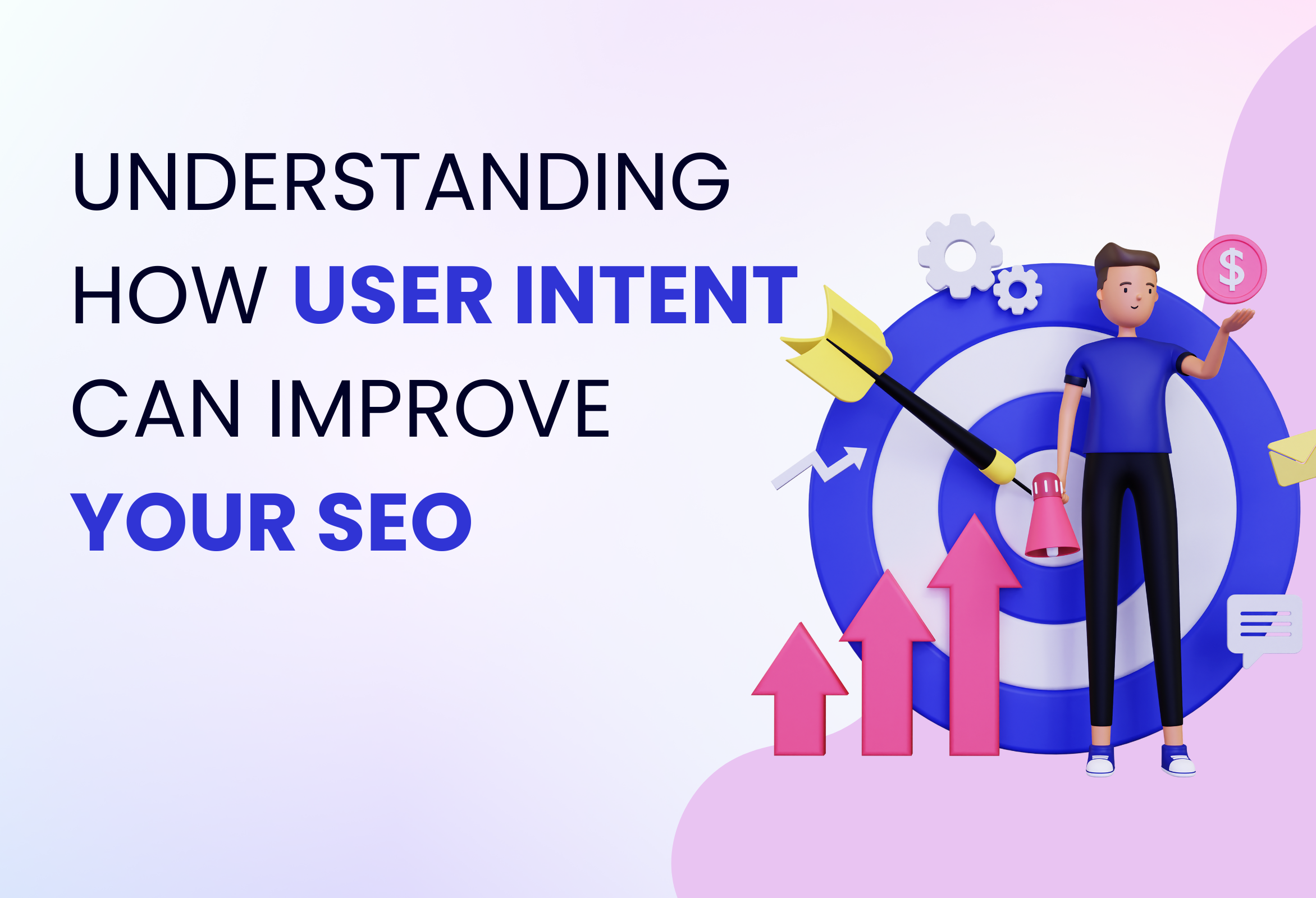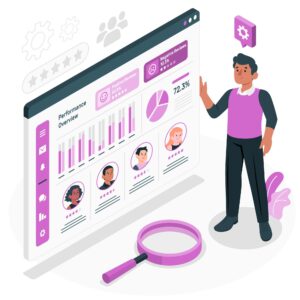Marketers are always eager to know what customers are searching for. When they have that information, offering them precisely the products/services/solutions they will buy becomes easier.
Search engines also want this!
Understanding User intent to improve your SEO is an important consideration of SEO and can improve your keyword research.
However, it can be hard to identify why someone searched for something as people think differently and ask questions from different angles. That’s why search engines use complex algorithms with artificial intelligence to better understand search results through queries and behavioral analysis.
This post will help you understand User intent to improve your SEO, why it matters, and how it affects improving your SEO.
Let’s begin.
Table of contents:
- What Is User Intent?
- Why Does User Intent Matter for SEO?
- How to Identify the User’s Intent Types
- How to Use User Intent to Improve Your SEO
- Frequently Asked Questions
What Is User Intent?
User intent refers to a person’s goal when interacting with digital content or conducting an online search. It involves going deeper into finding out what makes a user ask a question, which serves as important information for search engines and those who write such content. Therefore, comprehending User intent to improve your SEO is paramount to achieving relevant and satisfactory outcomes. Normally, there are three main kinds of user intent: transactional, navigational, and informational.
People use search engines with three sorts of intent: informational intent, Navigational Intent, and Transactional Intent. Recognizing and catering to user intent is critical for companies seeking to improve user experience, optimize content strategies, and effectively serve the varied demands of online audiences.
Why Choose User intent to improve your SEO?
Making your content and website structure match users’ needs exactly can be achieved through understanding their intent. Consequently, you will enjoy several search engine optimization benefits:
- Improved Relevancy: Search engines receive a signal of a valuable solution to a user’s query when they see content that satisfies user intentions. This escalates the score of relevance on your website, which is one of the major factors in search engine ranking algorithms.
- Enhanced User Experience: When users find relevant content that fits their requirements, they are more likely to stay connected and interact with your website. Positive user experience sends these positive signals back to search engines, subsequently raising your ranking.
- Increase in CTR: Great titles and descriptions that show the user’s intent will encourage click on your search result, increasing traffic and potential conversions.
- Less Bounce Rates: When users land on a page that provides the information they seek, they stay longer and go through other pages. This can help decrease your website’s bounce rate, a factor also used by search engines.
How to Identify the User’s Intent Types
You have to identify the search queries giving you traffic to apply user intent in your digital strategy. When you know which ones bring traffic, you can look more closely into the user intent behind each one. There are generally three categories into which user queries fall:
-
Information Intent
In this case, users want information. ‘What is cryptocurrency?’ is an excellent example of a search term showing informational intent. The people here do not intend to purchase anything; they seek relevant information.
Remember to respond with informational content to any business-related queries. These will inform users about how your products and services operate and how they can solve their problems. Also, it helps create content around keywords meant to provide information. Sharing information enables you to interact with potential clients, which will, in turn, increase your page visits.
-
Intent Navigation
In navigational intent, users are trying to find a specific website. Search terms contain brand names showing the searcher’s intention to visit this website or page. In this case, conversion optimization should be separate from your main concern regarding SEO because the user will be yours.
However, you must create an appropriate site with quality content to direct users where they want to go successfully. That way, you get site links on search engine results pages (SERPs). Branded keywords can improve organic SEO rankings, increase traffic, and boost conversions.
Ensure the results feature informative content about your brand that enlightens visitors about your business and a suitable landing page on which to proceed.
-
Transactional Intent
Users with transactional intent are ready to buy something (i.e., make a purchase). These words, such as ‘purchase,’ ‘discount,’ ‘sale,’ and ‘best price,’ prove one’s intention of making it happen. Using these in selecting your keywords can be game-changing for your PPC campaigns and SEO because it is easier for Google to determine if these key phrases indicate that you have transactional ads, which may result in shopping ads. This place is where all your conversion optimization strategies come into play.
Also, ensure you have a fully developed purchase page for all transactional queries. The purchase page is not technically a landing page, but it should be given equal importance because this is where the final conversion occurs. Construct it with powerful headlines, CTAs, product images, and so forth to leave a lasting impression on users.
How to Use User Intent to Improve Your SEO
The master of user intent comprehension is Google. It uses various search algorithms and ranking systems to identify the real purpose behind each query. Afterward, it examines other web pages seeking to match keywords with the search and user intent to put them on the SERPs. This is why your content must align well with intentions if you want to rank highly, boost traffic, and convert them into customers.
There are several steps that one can follow to achieve this:
- Your content creation ploys should be formed on intent-based keyword research to make it easier for your website’s users. Such as concentrating on specific questions or doing a long-tail search and offering extensive reference points. For this, you can refer to Ahrefs. This great explorer of keywords can give you a lot of related variations and volume data.
- Using the perfect informational searching home page for other Google tabs made specifically for marketing content will help align their marketing intentions properly. You must also create content that fits each Google tab. For instance, when creating videos, use keyworded titles and descriptions to appear on the video tab.
- You can change your page structure to take the customer from informational to transactional. User intent will help guide customers through their next steps and foster a journey. For instance, when consumers finish reading an article about your industry, you can connect them to another page with more details or invite them to subscribe to a newsletter. You can long with a navigational structure that would guide readers’ movement from one page to another, taking them nearer r conversion.
- Platforms like YouTube and Instagram, which are social media, have become huge search engines. In fact, they are structured so that you, as a businessperson, can promptly learn what customers think about your products. This is because the software developers of these programs enable people to buy directly or make subscriptions using them, respectively. These tools can be incorporated into your content marketing strategy to attract more clients.
- Finally, target different audiences with different landing pages. For example, within the B2B areas, a CEO visiting a website with decision-making tendencies may have different intentions compared to a B2C customer browsing through it in search of answers. Therefore, creating various landing pages that fit your audience would be helpful. These are;
- Initial pages for fresh clients
- Landing pages for retargeted audiences
- Landing pages for customers acquired via social media leads.
- Discounts and promotions for budget-conscious shoppers
By doing so, the pages will concord with the keywords of intent. As such, customers searching for information will be able to know more about your company from the About Us page, while those on a buying mission will be taken to purchase pages.
Do you still have inquiries about Search Intent or Conversion Rate Optimization? Do you want assistance with improving your SEO? Then you should contact EPlanet Soft. We are more than happy to assist.
Frequently Asked Questions
- What techniques can assist me in recognizing user goals for a keyword?
This is an important question. It is important to determine the type of user intent behind a keyword. This can be done by examining the content types currently ranking high for the keyword. Some of these include informational articles, product pages, and others. Keyword research tools that categorize keywords based on their intents (informational, transactional, etc.) can also be used.
- Can I optimize for user intent?
Yes, few keyword research tools will enable you to identify user intent for specific words and phrases. Moreover, SEO audit tools can look at your website content and make suggestions based on user intent.
- How do I measure if my optimizing for user intent is successful?
You should check your website analytics to see whether or not rankings and traffic change after you have optimized content for users’ intent. Monitoring conversions such as sales and registrations is also another way to find out if your content meets users’ needs.


